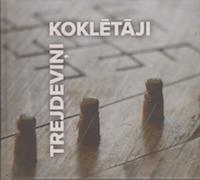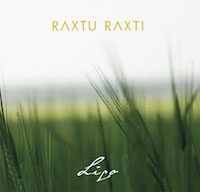Marimba and percussion virtuoso Rihards Zaļupe has been expanding his horizons, both as a producer (he produced Pāri robežām, the most recent album by Latvian Voices), and has also turned to composition in various styles.
He composes in many different styles, and has composed for film, theater, choir, and instrumental works, some of which can be found on his 2008 album Marimba Dance, which won a Latvian Music Records Award in 2009 for best debut.
Zaļupe’s most recent release is Z Atmosfēras, which, as its title might indicate, is a collection of atmospheric instrumental works, combining percussion and electronic music to create an intimate and personal collection of songs.
Zaļupe, who performs all the instruments on the album, is primarily known for his marimba performances, and this instrument figures on many of the tracks on the album, including “Agrs rīts”, where the marimba and electronic music combine to form a lush musical tapestry to represent the dawn of a new day. In Zaļupe’s composition, the day approaches in waves, with steady crescendos giving way to brief moments of quiet, as the echoes fade. The work concludes with a slow fade, only to roar back in the final moments.
Zaļupe also imbues his works with elements from Latvian folk music, such as in “Miegs ziemeļos”, which includes a fragment of the melody of the Latvian folk song “Sidrabiņa lietiņš lija”. Here the marimba interplays with the piano to create a dreamy vision of sleep in the Nordics. This work, as well as a few others on the album, begins with Zaļupe reciting poetry by his wife Sondra, in an oddly monotone delivery.
The marimba is again the focus of “Sakrālā meditācija”, a work inspired by sacred meditation, and the marimba plays the role of the prayer, repeated again and again, then built upon with further marimba melodies, until achieving a kind of enlightenment at the end. Zaļupe deftly weaves together the various marimba parts to create a captivating musical introspection.
All the works on the album are woven together with a winter theme, such as on “Ziemassvētku trakums” (Christmas Craze), one of the more up-tempo works on the album, where the marimba plays an almost incessant, repetitive melody, perhaps to indicate a kind of mania. The work then continues with various percussive sound effects (which may lead the listener to think of cash registers, a la the Pink Floyd song “Money”). All the time, the tempo becomes faster, with a corresponding increase in tension, however, the ending is calm, indicating that all available energy has been expended.
As befits its title, the compositions on Rihards Zaļupe’s Z Atmosfēras are dreamy and atmospheric, calm and reflective. Listeners that may have expected the percussive fireworks that Zaļupe has displayed elsewhere may be slightly disappointed – though the marimba and percussion play a key role in these works, they are intentionally restrained and meditative. Zaļupe confirms again that he is not only one of the most talented, but also most creative musicians in Latvia, and these compositions blend together various instruments and sounds to create an engaging and rich meditative journey.
For further information, please visit Rihards Zaļupe’s website.
Rihards Zaļupe
Z Atmosfēras
Green River Music, 2016
Track listing:
- Agrs rīts
- Miegs ziemeļos
- Netīruma krāsa
- Putnezeme
- Sakrālā meditācija
- Stāsts par senām skumjām
- Ziemassvētku trakums
- Plāksnes un zvani






